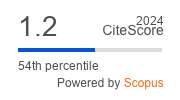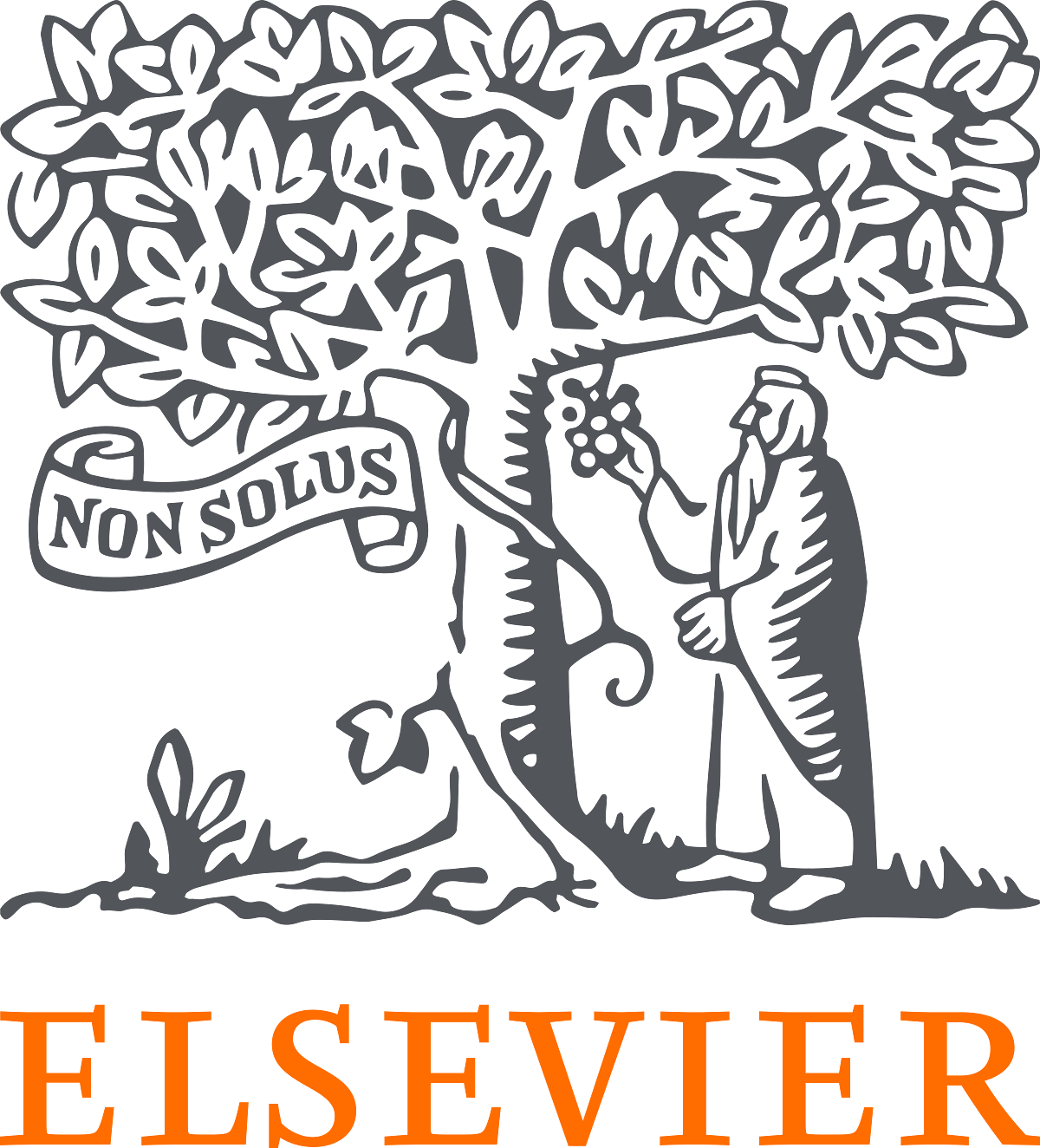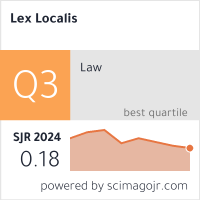Influence of Government Innovation Initiatives on Responsive E-governance: An Empirical Analsysis on Government Response to COVID-19 Pandemic in Pakistan
DOI:
https://doi.org/10.4335/21.4.991-1019(2023)Keywords:
innovation initiatives, responsive e-governance, covid-19 pandemic, adoption intention, government information qualityAbstract
Numerous segments of society have been affected by the global Covid-19 pandemic. It has heralded a new era oriented toward the digitization of Pakistan after the shutdown of public sector institutions and disruptions in governance implementations. The objective of this study is to investigate how governments’ innovation initiatives enhance government response to cope with Covid-19 with the primitive mechanism of citizens’ adoption intention behavior during the pandemic. Employing a structural equation model in SmartPLS, data samples collected from 663 followers of social media accounts of government information department through a self-administered survey questionnaire were examined. The findings indicated a direct and indirect relationship between governments' innovation initiatives and responsive e-governance, intending to adopt e-services acting as a mediator. Similarly, the quality of government information was found to influence citizens' willingness to adopt e-services by interacting with innovation initiatives. Institutions and policymakers can benefit from the study's strategic and practical recommendations.
References
Akram, M. S., Malik, A., Shareef, M. A. & Goraya, M. A. S. (2019) Exploring the interrelationships between technological predictors and behavioral mediators in online tax filing: The moderating role of perceived risk, Government Information Quarterly, 36(2), pp. 237-251.
Al-Emran, M. & Teo, T. (2020) Do knowledge acquisition and knowledge sharing really affect e-learning adoption? An empirical study, Education and Information Technologies, 25(3), pp. 1983-1998.
Al Athmay, A. (2015) Demographic factors as determinants of e-governance adoption: a field study in the United Arab Emirates (UAE), Transforming Government: People, Process and Policy, 9(2), pp. 159-180.
Alam, M. & Said, J. (2015) Public accountability system: Empirical assessment of public sector of Malaysia, Said, J., Alam, MM, and Aziz, MA, pp. 225-236.
Amin, A. & Maq, S. (2021) Connecting Pakistan: Covid-19 as a Catalyst for Digital Transformation, Tabadlab, available at: https://tabadlab.com/connecting-pakistan-covid-19-catalyst-for-digital-transformation (May 24, 2021).
Anguera-Torrell, O., Aznar-Alarcón, J. P. & Vives-Perez, J. (2021) COVID-19: Hotel industry response to the pandemic evolution and to the public sector economic measures, Tourism Recreation Research, 46(2), pp. 148-157.
Arshad, S. & Khurram, S. (2020) Can government’s presence on social media stimulate citizens’ online political participation? Investigating the influence of transparency, trust, and responsiveness, Government Information Quarterly, 37(3).
Ashfaq, M. & Bashir, M. (2021) Pakistan: making a “COVID budget” in a struggling economy, Journal of public budgeting, accounting & financial management, 33(1), pp. 69-77.
Bailey, D. E., Leonardi, P. M. & Chong, J. (2010) Minding the gaps: Understanding technology interdependence and coordination in knowledge work, Organization Science, 21(3), pp. 713-730.
Bajwa, S. U., Kitchlew, N., Shahzad, K. & Rehman, K. U. (2018). Public–Private Partnership (PPP) as an interdependent form (I-Form) organization, International Journal of Public Administration, 41(11), pp. 859-867.
Beshi, T. D. & Kaur, R. (2020) Public trust in local government: Explaining the role of good governance practices, Public Organization Review, 20(2), pp. 337-350.
Bhimani, H., Mention, A.-L. & Barlatier, P.-J. (2019) Social media and innovation: A systematic literature review and future research directions, Technological Forecasting and social change, 144, pp. 251-269.
Bokhari, S. A. A. & Myeong, S. (2022) Artificial Intelligence-Based Technological-Oriented Knowledge Management, Innovation, and E-Service Delivery in Smart Cities: Moderating Role of E-Governance, Applied Sciences, 12(17), p. 8732.
Capodistrias, P., Szulecka, J., Corciolani, M. & Strøm-Andersen, N. (2022) European food banks and COVID-19: Resilience and innovation in times of crisis, Socio-Economic Planning Sciences, 82.
Chatterjee, S., Chaudhuri, R., Vrontis, D. & Piccolo, R. (2021) Enterprise social network for knowledge sharing in MNCs: examining the role of knowledge contributors and knowledge seekers for cross-country collaboration, Journal of International Management, 27(1).
Chin, W. W., Marcolin, B. L. & Newsted, P. R. (2003) A partial least squares latent variable modeling approach for measuring interaction effects: Results from a Monte Carlo simulation study and an electronic-mail emotion/adoption study, Information systems research, 14(2), pp. 189-217.
Criado, J. I., Sandoval-Almazan, R. & Gil-Garcia, J. R. (2013) Government innovation through social media, Government Information Quarterly, 30(4), pp. 319-326, https://doi.org/10.1016/j.giq.2013.10.003.
Economic, U. N. D. F. & Desa., S. A. (2020) United Nations E-government Survey 2020: Digital Government in the Decade of Action For... Sustainable Development (New York: UN).
Ertur, C. & Koch, W. (2007) Growth, technological interdependence and spatial externalities: theory and evidence, Journal of applied econometrics, 22(6), pp. 1033-1062.
Farazmand, A. (2017) Governance reforms: The good, the bad, and the ugly; and the sound: Examining the past and exploring the future of public organizations, Public Organization Review, 17(4), pp. 595-617.
Fernández Robin, C., McCoy, S., Yáñez Sandivari, L. & Yáñez Martínez, D. (2014) Technology acceptance model: Worried about the cultural influence?, International Conference on HCI in Business, pp. 609-619.
Ghezzi, A., Gastaldi, L., Lettieri, E., Martini, A. & Corso, M. (2016) A role for startups in unleashing the disruptive power of social media, International Journal of Information Management, 36(6), pp. 152-1159.
Goldfinch, S., Taplin, R. & Gauld, R. (2021) Trust in government increased during the Covid‐19 pandemic in Australia and New Zealand, Australian Journal of Public Administration, 80(1), pp. 3-11.
Gupta, A., Yousaf, A. & Mishra, A. (2020) How pre-adoption expectancies shape post-adoption continuance intentions: An extended expectation-confirmation model, International Journal of Information Management, 52, https://doi.org/10.1016/j.ijinfomgt.2020.102094.
Gupta, K. P., Singh, S. & Bhaskar, P. (2018) Citizens' perceptions on benefits of e-governance services, International Journal of Electronic Governance, 10(1), pp. 24-55.
Hair, J. F., Anderson, R. E., Babin, B. J. & Black, W. C. (2010) Multivariate data analysis: A global perspective, Vol. 7 (Upper Saddle River, NJ: Pearson).
Hamza Quddus, D., Qayyum, S., Noreen, N., Khan, A. Z., Saeed, K., Rehman, H. U., Shah, M. & Khan, M. A. (2022) E-Commerce Tax Compliance In Pakistan, Journal of Positive School Psychology, 6(10), pp. 4292-4298.
Hassan, M. A., Shukur, Z., Hasan, M. K. & Al-Khaleefa, A. S. (2020) A review on electronic payments security, Symmetry, 12(8), p. 1344.
Henseler, J., Ringle, C. M. & Sarstedt, M. (2015) A new criterion for assessing discriminant validity in variance-based structural equation modeling, Journal of the academy of marketing science, 43(1), pp. 115-135.
Huang, I. Y. F. (2020) Fighting COVID‐19 through government initiatives and collaborative governance: the Taiwan experience, Public Administration Review, 80(4), pp. 665-670.
Huang, M., Li, M. & Liao, Z. (2021) Do politically connected CEOs promote Chinese listed industrial firms’ green innovation? The mediating role of external governance environments, Journal of Cleaner Production, 278, https://doi.org/10.1016/j.jclepro.2020.123634.
Izumi, T., Shaw, R., Djalante, R., Ishiwatari, M. & Komino, T. (2019) Disaster risk reduction and innovations, Progress in Disaster Science, 2, https://doi.org/10.1016/j.pdisas.2019.100033.
Jing, Y. (2021) Seeking opportunities from crisis? China’s governance responses to the COVID-19 pandemic, International Review of Administrative Sciences, 87(3), pp. 631-650.
Khan, F., Ali, Y. & Pamucar, D. (2022). A new fuzzy FUCOM-QFD approach for evaluating strategies to enhance the resilience of the healthcare sector to combat the COVID-19 pandemic, Kybernetes, 51(4), pp. 1429-1451.
Khan, N. A. & Khan, A. N. (2019) What followers are saying about transformational leaders fostering employee innovation via organisational learning, knowledge sharing and social media use in public organisations?, Government Information Quarterly, 36(4).
King, W. R. & He, J. (2006) A meta-analysis of the technology acceptance model, Information & management, 43(6), pp. 740-755.
Korea, G. o. t. R. o. (2020) How Korea Responded to a Pandemic Using ICT: Flattening the Curve on COVID-19, available at: https://www.mois.go.kr/eng/bbs/type002/commonSelectBoardArticle.do?bbsId=BBSMSTR_000000000022&nttId=76748 (January 13, 2023).
Lawson-Body, A., Illia, A., Willoughby, L. & Lee, S. (2014) Innovation characteristics influencing veterans' adoption of e-government services, Journal of Computer Information Systems, 54(3), pp. 34-44.
Liao, Q., Yuan, J., Dong, M., Yang, L., Fielding, R. & Lam, W. W. T. (2020) Public engagement and government responsiveness in the communications about COVID-19 during the early epidemic stage in China: infodemiology study on social media data, Journal of medical Internet research, 22(5).
Ludwig, D. & Macnaghten, P. (2020) Traditional ecological knowledge in innovation governance: a framework for responsible and just innovation, Journal of Responsible Innovation, 7(1), pp. 26-44.
Mahajan, V. & Peterson, R. A. (1985) Models for innovation diffusion (New York: Sage Publications inc.).
Mahnaz Hassan, S. (2021) Pakistan’s Social Policy Response to Covid-19: Expansion of the Ehsaas Program (Germany: Global Dynamics of Social Policy, CRC 1342, Deutsche Forschungsgemeinschaft, DFG).
Mansoor, M. (2021) Citizens' trust in government as a function of good governance and government agency's provision of quality information on social media during COVID-19, Government Information Quarterly, 38(4).
Mao, Y. (2020) Combating COVID-19 through collaborative governance: lessons from East Asia, Chinese Public Administration Review, 11(2), pp. 132-141.
Meijer, A. (2015) E-governance innovation: Barriers and strategies, Government Information Quarterly, 32(2), pp. 198-206.
Memon, S., Mahar, S., Dhomeja, L. D. & Pirzado, F. (2015) Prospects and challenges for social media in Pakistan, 2015 International Conference on Cyber Situational Awareness, Data Analytics and Assessment (CyberSA), https://doi.org/10.1109/CyberSA.2015.7166124.
Mensah, I. K., Zeng, G. & Luo, C. (2020) E-Government services adoption: an extension of the unified model of electronic government adoption, Sage Open, 10(2).
Mergel, I. (2012) The social media innovation challenge in the public sector, Information polity, 17(3-4), pp. 281-292.
Muninger, M.-I., Hammedi, W. & Mahr, D. (2019) The value of social media for innovation: A capability perspective, Journal of Business Research, 95, pp. 116-127.
Omoding, J., Walters, G., Andama, E., Carvalho, S., Colomer, J., Cracco, M., Eilu, G., Kiyingi, G., Kumar, C. & Langoya, C. D. (2020) Analysing and applying stakeholder perceptions to improve protected area governance in Ugandan conservation landscapes, Land, 9(6), p. 207.
Park, H. & Blenkinsopp, J. (2011) The roles of transparency and trust in the relationship between corruption and citizen satisfaction, International Review of Administrative Sciences, 77(2), pp. 254-274.
Park, M. J., Kang, D., Rho, J. J. & Lee, D. H. (2016) Policy role of social media in developing public trust: Twitter communication with government leaders, Public Management Review, 18(9), pp. 1265-1288.
Peters, B. G. & Tarpey, M. (2019) Are wicked problems really so wicked? Perceptions of policy problems, Policy and Society, 38(2), pp. 218-236.
Phang, C. W., Li, Y., Sutanto, J. & Kankanhalli, A. (2005) Senior citizens' adoption of e-government: In quest of the antecedents of perceived usefulness, Proceedings of the 38th annual Hawaii international conference on system sciences, https://doi.org/10.1109/HICSS.2005.538.
Piezunka, H. & Dahlander, L. (2015) Distant search, narrow attention: How crowding alters organizations’ filtering of suggestions in crowdsourcing, Academy of Management Journal, 58(3), pp. 856-880.
Purwanto, A., Zuiderwijk, A. & Janssen, M. (2020) Citizen engagement with open government data: Lessons learned from Indonesia’s presidential election, Transforming Government: People, Process and Policy, 14(1), pp. 1-30.
Rahman, M. S., Hossain, M. A., Zaman, M. H. & Mannan, M. (2020) E-service quality and trust on customer's patronage intention: moderation effect of adoption of advanced technologies, Journal of Global Information Management (JGIM), 28(1), pp. 39-55.
Reddick, C. G. & Norris, D. F. (2013) Social media adoption at the American grass roots: Web 2.0 or 1.5?, Government Information Quarterly, 30(4), pp. 498-507.
Roberts, D. L., Piller, F. T. & Lüttgens, D. (2016) Mapping the impact of social media for innovation: The role of social media in explaining innovation performance in the PDMA comparative performance assessment study, Journal of Product Innovation Management, 33, pp. 117-135.
Saha, P., Nath, A. & Salehi-Sangari, E. (2010) Success of government e-service delivery: does satisfaction matter?, Electronic Government: 9th IFIP WG 8.5 International Conference, EGOV 2010, Lausanne, Switzerland, August 29-September 2, 2010. Proceedings 9, pp. 204–215, https://doi.org/10.1007/978-3-642-14799-9_18.
Salman, Y., Irfan, S. & Moazzam, A. (2023) 20. Fostering innovation in public services: illustrations from Pakistan, Handbook on Asian Public Administration, 284.
Sarkar, S. (2021) Breaking the chain: Governmental frugal innovation in Kerala to combat the COVID-19 pandemic, Government Information Quarterly, 38(1), https://doi.org/10.1016/j.giq.2020.101549.
Shah, S., Solangi, Y. & Ikram, M. (2019) Analysis of barriers to the adoption of cleaner energy technologies in Pakistan using Modified Delphi and Fuzzy Analytical Hierarchy Process, Journal of Cleaner Production, 235, pp. 1037-1050.
Statista, I. (2018) Number of social media users worldwide from 2010 to 2021 (in billions), Statista, available at: https://www.statista.com/statistics/278414/number-of-worldwide-social-network-users/ (January 6, 2023).
Sumra, K. B., Alam, M. & Aftab, R. (2022) Artificial intelligence for strengthening administrative and support services in public sector amid COVID-19: Challenges and opportunities in Pakistan, Advances in Data Science and Intelligent Data Communication Technologies for COVID-19: Innovative Solutions Against COVID-19, pp. 153-172.
Szkuta, K., Pizzicannella, R. & Osimo, D. (2014) Collaborative approaches to public sector innovation: A scoping study, Telecommunications Policy, 38(5-6), pp. 558-567.
Tang, Z., Miller, A. S., Zhou, Z. & Warkentin, M. (2021) Does government social media promote users' information security behavior towards COVID-19 scams? Cultivation effects and protective motivations, Government Information Quarterly, 38(2), https://doi.org/10.1016/j.giq.2021.101572.
Todisco, L., Tomo, A., Canonico, P., Mangia, G. & Sarnacchiaro, P. (2021) Exploring social media usage in the public sector: Public employees' perceptions of ICT's usefulness in delivering value added, Socio-Economic Planning Sciences, 73.
Ullah, A., Pinglu, C., Ullah, S., Abbas, H. S. M. & Khan, S. (2021) The role of e-governance in combating COVID-19 and promoting sustainable development: a comparative study of China and Pakistan, Chinese Political Science Review, 6(1), pp. 86-118.
Upadhyay, P., Kumar, A., Dwivedi, Y. K. & Adlakha, A. (2022) Continual usage intention of platform-based governance services: A study from an emerging economy, Government Information Quarterly, 39(1), https://doi.org/10.1016/j.giq.2021.101651.
van Ooijen, C., Ubaldi, B. & Welby, B. (2019) A data-driven public sector: Enabling the strategic use of data for productive, inclusive and trustworthy governance (Paris: OECD Library), https://doi.org/10.1787/09ab162c-en.
Vigoda‐Gadot, E. & Yuval, F. (2003) Managerial quality, administrative performance and trust in governance revisited: A follow‐up study of causality, International Journal of Public Sector Management, 16(7), pp. 502-522, https://doi.org/10.1108/09513550310500382.
Yuan, Y.-P., Dwivedi, Y. K., Tan, G. W.-H., Cham, T.-H., Ooi, K.-B., Aw, E. C.-X. & Currie, W. (2023) Government Digital Transformation: Understanding the Role of Government Social Media, Government Information Quarterly, 40(1), https://doi.org/10.1016/j.giq.2022.101775.
Zhao, Y., Ni, Q. & Zhou, R. (2018) What factors influence the mobile health service adoption? A meta-analysis and the moderating role of age, International Journal of Information Management, 43, pp. 342-350.
Zheng, L. & Zheng, T. (2014) Innovation through social media in the public sector: Information and interactions, Government Information Quarterly, 31(1), pp. S106-S117, https://doi.org/10.1016/j.giq.2014.01.011.
Zuiderwijk, A., Janssen, M., Van De Kaa, G. & Poulis, K. (2016) The wicked problem of commercial value creation in open data ecosystems: Policy guidelines for governments, Information polity, 21(3), pp. 223-236.








